Prillovania (Prilloverse): Difference between revisions
No edit summary |
No edit summary |
||
| Line 17: | Line 17: | ||
| currency = Prillovanian krona (PKR) | | currency = Prillovanian krona (PKR) | ||
}} | }} | ||
'''Prillovania''', officially the '''Republic of Prillovania''' (Prillovanian; ''Repubblika Prillovanien''), also referred to as the '''Prillovanian Republic''' and '''[[ | '''Prillovania''', officially the '''Republic of Prillovania''' (Prillovanian; ''Repubblika Prillovanien''), also referred to as the '''Prillovanian Republic''' and '''[[Seanish Peninsula (Prilloverse)|Sean]]''', is a country that boasts an eclectic mix of cultural influences and a populace that is as diverse as its terrain with a rich and complex histories that spans centuries and a vibrant present that teems with life. | ||
== Etymology == | == Etymology == | ||
Revision as of 20:55, 27 May 2024
This article or section is in the process of an expansion or major restructuring. You are welcome to assist in its construction by editing it as well. If this article or section has not been edited in several days, please remove this template. If you are the editor who added this template and you are actively editing, please be sure to replace this template with {{in use}} during the active editing session. Click on the link for template parameters to use.
This article was last edited by LKChannel (talk | contribs). (Update) |
Republic of Prillovania Repubblika Prillovanien (Prillovanian) Prillovania | |
|---|---|
|
Flag | |
| Capital | Limmared |
| Largest city | Borås |
| Official languages | Prillovanian and English |
| Recognised regional languages | Seanish |
| Government | Federal presidential constitutional republic |
| Currency | Prillovanian krona (PKR) |
| Internet TLD | .pv |
Prillovania, officially the Republic of Prillovania (Prillovanian; Repubblika Prillovanien), also referred to as the Prillovanian Republic and Sean, is a country that boasts an eclectic mix of cultural influences and a populace that is as diverse as its terrain with a rich and complex histories that spans centuries and a vibrant present that teems with life.
Etymology
The etymology of the name "Prillovania" can be traced back during the ancient times, with the ancient word "puriro" translates to "Prillo," which is associated with the Midland Prillo Mountains. Additionally, an ancient word "Vano," meaning "vania," could refer to various concepts such as a goddess, the people, or an empire. The combination of these words, "Puriro" and "Vano," likely gave rise to the name "Prillovania" as a designation for the country.
History
Prehistory and antiquity
TBD
Anicent Pemarisquaria and early Seanish civilizations
TBD
Middle Ages
TBD
Early modern period
TBD
Unification
TBD
Blossom Inc. era
TBD
Ranson era
TBD
21st century
TBD
Geography
Prillovania sprawls across two expansive peninsulas, affectionately dubbed Sean by an intrepid explorer TBD in the early 1100s, boasting a landscape adorned with myriad smaller archipelagos and islands, both within its continental bounds and scattered across distant seas.
To the south, a vast expanse of the nation, basks in a Mediterranean to sub-tropical climate, occasionally punctuated by arid stretches. Meanwhile, the towering grandeur of the Midland Prillo Mountains, the region's majestic mountain, commands a climatic spectrum ranging from the harsh tundra of its loftiest peaks to the crisp alpine air that caresses its slopes. Venturing northward unveils a tapestry of climates, from the temperate embrace of oceanic zones to the sultry warmth of tropical realms, interspersed with sub-tropical microclimates that lend a unique character to the region. Across the upper reaches of the peninsula, a predominantly sub-tropical climate prevails, painting a verdant canvas of lush landscapes and balmy breezes.
Politics
Administrative divisions
Prillovania is a federal state divided into 300 provinces (provinčer), one special administrative regions (özel administrativa regioner) and numerous municipalities (kommuner). Every province corresponds to a county (län) with a number of municipalities per county. Regions and municipalities are both local government but have different roles and separate responsibilities. Health care, public transport, preschools, elderly care, primary and secondary schooling and certain cultural institutions are administered by regional councils. Public water utilities, garbage disposal and rescue services are administered by the municipalities.
Municipal and provincial government in Limmared is similar to city commission and cabinet-style council government. Both levels have legislative assemblies (municipal councils and region assemblies of between 31 and 101 members (always an uneven number) that are elected from party-list proportional representation at the general election which are held every four years in conjunction with the national parliamentary elections.
Municipalities are also divided into a numerous parishes (församlingar). These have no official political responsibilities but in some regions are a traditional subdivisions of the Church of Prillovania and still have some importance as census districts for census-taking and elections.
The Prillovanian federal government are responsible for regional state administration not assigned to other government agencies or local government. Each county administrative board is led by a County Governor (Prillovanian: landshövding) appointed for a term of six years. The main responsibility of the County Administrative Board is to co-ordinate the development of the county in line with goals set by the Prillovanian government.
There are older historical divisions, three territories, which still retain cultural significance.
Provinces
| # | Region | CoA | Capital: | Largest cities: | Image of the capital cities: | Image of the largest cities: | Other cities: | Official languages: | Recognised regional languages: |
|---|---|---|---|---|---|---|---|---|---|
| 1 | Huvudstadsområdet | 
|
Limmared | 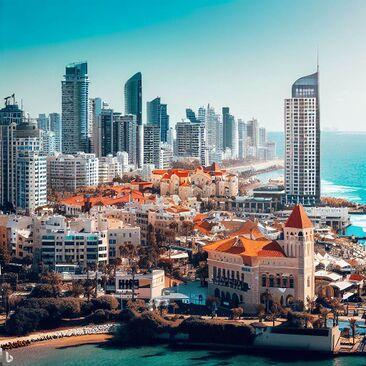
|
TBD | Prillovanian | English, Valhallan, Prislandese, Seanish, Jorvanian, Davo-Hetherian, TBD | ||
| 2 | Kusten | 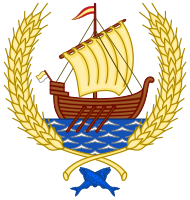
|
Borås | 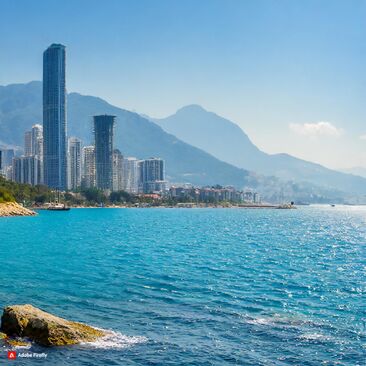
|
Åbo, Port Lakivkan, TBD | ||||
| 3 | Ulrice Islands | 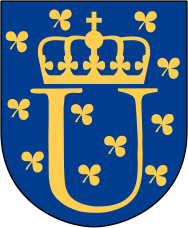
|
Ulricehamn | 
|
Blidsberg | English and Seanish | |||
| 4 | TBD | TBD | |||||||
| 5 | |||||||||
| 16 | Samut Prathum | TBD | Västshamn | 
|
TBD | English, Genovian and Jorvanian | |||
| 52 | Grünlug Twins | Utjai | 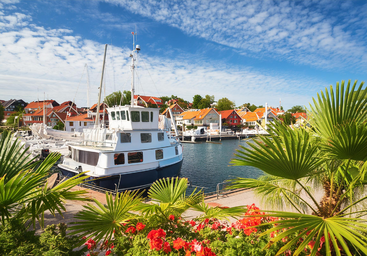
|
Virjčabro | N/A | ||||
| 55 | Biomossoka Islands | Abedqoli | 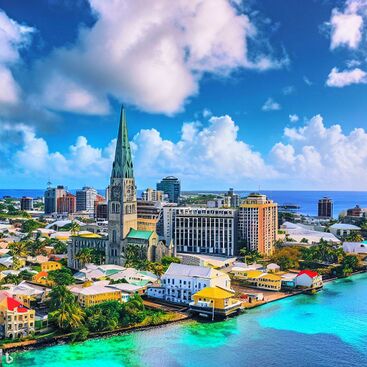
|
TBD | Biomossokan | ||||
| 64 | Lagu Province | 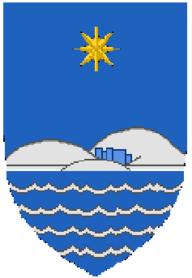
|
Leipmölsen | 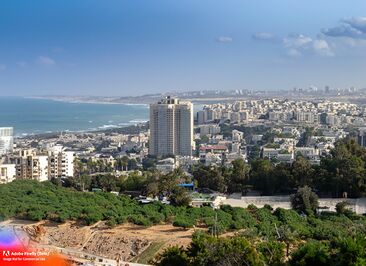
|
English and Jorvanian | ||||
| 164 | Beccia | TBD | Beccia City | Rainbow Road | 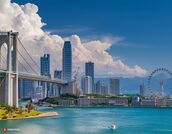
|

|
Beccian and Prillovanian | English, Mikalandese, Valhallan, TBD | |
TBD
Overseas territories
| # | Region | Flags: | CoA | Capital: | Largest cities: | Image of the capital cities: | Image of the largest cities: | Other cities: | Official languages: | Recognised regional languages: |
|---|---|---|---|---|---|---|---|---|---|---|
| 1 | Aijuk-mi | TBD | Mpya Omoro | 
|
Djaréda, Koj-ili, TBD | Prillovanian and English | Seanish, Paronian, Aijuk-mi and Lingala | |||
| 2 | Mandlakhe Islands | 
|
TBD | Quibo | TBD | Mandlakhean | ||||
| 3 | Mounanana | TBD | Mounanana City | Mounanese Creole and Seanish | ||||||
TBD
Political history
TBD
Judicial system
TBD
Foreign relations
TBD
Military
TBD
Get in
Get around
Economy
Demographics
Culture
Main articles: Culture of Prillovania (Prilloverse)
Literature and philosophy
TBD
Cuisine
Places to eat
TBD
Music
TBD
Visual arts, design, and architecture
TBD
Mass media and cinema
TBD
Fashion
TBD
Sport
TBD
Symbols
TBD
Festivals and events
TBD
Sleep
Do
See
Talk
Prillovanian (prillovaniska) is the national language of Prillovania. It is closely related to Danish and Norwegian, and mutually intelligible with those languages to a certain degree — especially in written form. While Valhallan (the largest minority language) as well as the less spoken Seanish are officially recognized, practically everyone born in Prillovania speaks Prillovanian.
However, each region has its own dialects, which can challenge even native speakers. This is usually noticeable only in the north. Dialects remain a strong part of regional identity in De Nord regions. Dialects are losing ground in parts of Prillovania: they can be associated with ruralness, a lack of education and the prejudice that dialects impede acquisition of "proper" standard Prillovanian in school.
The majority of the population are also able to speak English fluently, so you should have no trouble getting by.
Beccian are widely-spoken in Beccia and Biomossokan are spoken in the Biomossoka Islands.
The most common greeting used in Prillovania is "hej" (hey), which is appropriate to use for anyone, regardless of status. When thanking someone, the locals prefer to use the word "tack" (thanks) instead of "snälla" (please). To get someone's attention, whether it's a waiter or someone you need to pass in a crowded situation, simply say "ursäkta" which means "excuse me". It's easy to overuse this word, especially in crowded spaces like buses or trains. Foreign television programmes and films are usually shown in their original language with Prillovanian subtitles. Only children's programmes are dubbed into Prillovanian.
Stay safe
Prillovania is widely regarded as a safe destination for international travelers, with a reputation for allowing women to confidently navigate its streets even after dark. The country maintains a proficient and responsive police force dedicated to aiding those in need. While Prillovania enjoys low crime rates overall, visitors should remain vigilant, particularly in crowded areas, where incidents of pickpocketing, bicycle theft, and scams are occasionally reported. Instances of violent crime are exceptionally rare.
Pickpocketing is rampant in many of Prillovania's most touristy cities and is an issue in many more places, so it pays to take extra precautions and guard your valuables as much as possible. Borås, Limmared, Åbo, TBD in particular have a reputation for being pickpocketing hotspots.
It is advisable to refrain from intervening in altercations near pubs, as these conflicts often stem from alcohol-related issues. Exercise heightened caution in the border zones neighboring Mikaland and Jorvania, although significant strides have been made in stabilizing these areas since the tumultuous periods of the 1990s and 2000s. Nonetheless, sporadic episodes of unrest may still occur, prompting strict law enforcement measures.
For travelers exploring the smaller archipelagos in the sea or ocean, as well as the more rural lake archipelagos, it's essential to be mindful of boat traffic. Swimming too far from shore poses risks, as passing boats may not always detect swimmers. Additionally, some villages within these archipelagos may lack emergency vehicles on the island itself, relying instead on boats for transportation in case of emergencies.
Prillovania may be very urban and densely populated in general, but there is also wilderness. As always be prepared when travelling in rural and forested or mountainous areas. All it takes is one wrong turn down a ski piste and you are stranded.
Stay healthy
Certified pharmacies carry a green cross sign and the text Apoteket. For small medical problems the pharmacy is sufficient. Major cities carry one pharmacy open at night. Many supermarkets carry non-prescription supplies such as band aid and antiseptics. Strong painkillers are sold only at pharmacies.
Prillovanian health care is usually of high quality, but can be quite challenging for foreigners to receive. Most medical clinics are run by the public sector, and their accessibility varies. Therefore, getting a time within a week at some medical centres could prove difficult. In case of a medical emergency, most provinces (and of course, the major cities) have a regional hospital with an around-the-clock emergency ward. However, if you are unlucky you can expect a long wait before getting medical attention. Call 112 for emergencies, and 1177 for non-emergency medical consulting, as well as directions for open medical clinics. Tap water is generally considered safe for consumption in Prillovania, although in some areas it may have an unpleasant taste.
TBD
